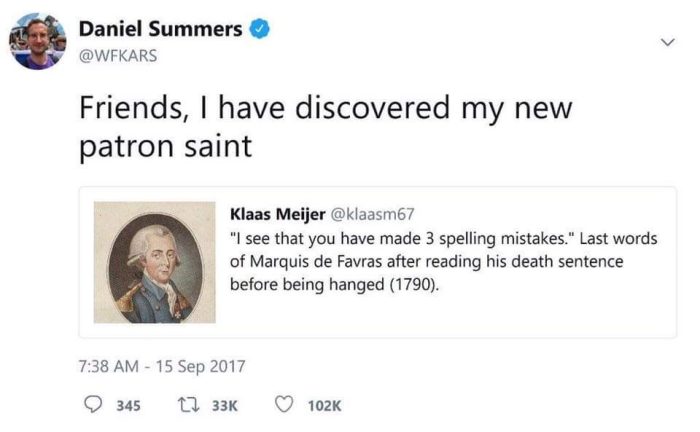part one, because I think this is going to be a series
TOPICAL: this is part of the on Chosen Family series
Did you know that I live in an intentional community? I live in an intentional community. One of us came up with that descriptor (I think it was me?), and it feels accurate.
We are a group of chosen family, some of us blood related, some of us not, some of us related legally, some of us not. We are all somewhere along the neurodivergent spectrum. Most of us identify as queer. Most of us are introverted as well, and need plenty of personal space and alone time. And we all need to know what to expect and when, although obviously some things are just unplanned.
communicating with words
One of the hardest things to manage when you live this way is the time and effort it takes to communicate with everyone. We have a great many themed chat groups in Keybase (it’s secure, which is why we use it), so it’s usually easy to decide where to put something we need to say, but that much communication can really use up the spoons.
The biggest reason that communication within our group takes so much effort, I think, is that we have a set of guidelines for how we communicate with each other, which includes an extra moment to think about what we’re going to say. In person, we get someone’s attention by starting off with ‘Excuse me, [name],’ and we try to be in visual range when we do so as much as possible. A lot of us have C-PTSD and are easily startled and occasionally hyper-vigilant. In a text chat, we only tag @here when it’s the right importance level (like ‘@here does anyone know where the extra toilet paper is?’ or ‘@here I lost my water bottle somewhere, please let me know if you see it’ or ‘@here if you heard a loud noise that was me dropping something, no need to panic’ or ‘@here dinner is ready!’), and we only tag specific people if we especially want their attention (for instance ‘@person lol’ accompanying a meme we’ve just shared that reminds us of them, or ‘@person and @other_person, do you know where the toddler’s favorite blanket is?’, or ‘@person could I run two loads of laundry tomorrow?’).

One of my favorite things we do is ask for emoji reactions to something we just typed up, like if we are voting on what kind of dinner to have and ‘taco’ means tacos and ‘fries’ means McDonald’s. It’s much lower effort to respond with an emoji.
Private chats are important too, and operate much the same as group chats in terms of how we speak to each other, but of course they are different. Having them is important especially because it gives each person a way to say something that they don’t need or want everyone to engage with, whether it’s because it is sensitive content, or because they are having a problem with someone else and need help, or whatever other reason you’d want to share something privately.
communicating without words
We have other ways of communicating other than in-person and over text. For example, we have a toddler who has recently discovered how to open doors, although for the time being he only wants to open the doors he cares the most about — his door, the door to downstairs, and the door to the deck — so we leave the bathroom door shut. We have one of those cheap push-to-turn-on-or-off lights attached to the outside of the doors of both the second and first floor bathrooms, so that we can click on the light when we go into the bathroom, indicating this room is currently occupied, please do not come in, and click it off again when we leave, so whomever needs the bathroom next can figure out where to go (lol) without needing to guess or knock.
Oh, that’s another thing. We don’t knock on doors except VERY occasionally, because of the anxiety that a door knock can bring up. Did I mention that most of us have C-PTSD? I think the only person in the household that doesn’t have C-PTSD is the toddler. Personally, my door-knock anxiety is a result of the sheer number of police and CPS visits three years ago when I lived in a whole-ass other city, about my former second-eldest child: whether he had gotten into trouble, or was in the hospital, or had said something offhand to a mandatory reporter, which then had to be untangled because he has the ability to lie without even blinking. So in order to get someone’s attention or to ask to go into their space if their door is shut, you’d use the chat you have with that person and ask. Or, if the door is open, you would stand at the doorway and say ‘Excuse me [name], may I come in?’
A closed door, an open door, a light on the bathroom door — these are all pretty useful ways for us to communicate without words. Another thing that many of us tend to do is to use headphones or ear buds to manage sensory input and to have soothing background noise of some kind. Or we’re actively listening to music or a podcast or an audio book, or very occasionally, having a “phone conversation” like some kind of barbarian from 1990. Seeing someone wearing headphones or holding and interacting with a device or preparing a meal with the exhaust fan on is a signal that they may not hear you speaking, so you would default to texting them or carefully getting in their line of sight to get their attention non-verbally.
free to choose
The answer to any question at any time can be no. It’s false choice when there isn’t an option to say no. If the thing we’re talking about doesn’t have a yes/no option, we take a lot of time to explain why. We trust each other and are actively working on increasing our trust with each other by reaching agreement on things and by following the structures we’ve all agreed on.
We do our best to balance the needs of the many against the needs of the few (or the one) — thank you Leonard Nimoy and I miss you a lot — and this means that sometimes, saying no would be more harmful than saying yes. But we each have to make that choice for ourselves individually. This does mean that sometimes, one of us is spinning more plates than they can normally spin, and there’s an understanding that this means when the plate spinning is finished, that person is going to need some time to recover, whether it’s a few hours or a few days. And, again, that understanding exists because we’ve had conversations about it in different contexts and for various reasons. We try very hard not to make assumptions about what someone else already knows, which makes communication so valuable and necessary.
parallel play and infodumping
If you’ve been on the autism/ADHD/neurospicy side of TikTok or Twitter, or you ARE somewhere on that spectrum (which is entirely likely given that you’re reading this), you’ve probably heard something about the ways that people like us have different styles of personally relating with others.
Parallel play is one of the things we do when we all hang out together in the same room; we’re on our phones or maybe someone is streaming a show or playing a game or reading a book. We have a shared understanding that this kind of behavior does not mean that we don’t care and would rather not be present; it means that we are comfortable hanging out, and probably enjoying just being in the same room as the people we care about. There are many times that I want to be alone, but I don’t want to be by myself.
Another thing we tend to do is infodump about whatever thing we’ve been learning about or doing or noticing. But before the information is about to be dumped, we ask if the person or people would like to hear an astoundingly large amount of facts about that special interest. And, again, anyone is free to say no. I’m not always able to handle a firehose of information, but when I can, I love being able to be present when one of my loved ones is excitedly detailing all the things they know about their favorite video game (including who the game devs are and what the game creator is like including their life philosophy and how that shaped the story of the game, and/or what things are frustrating or problematic or amazing or enjoyable); or the type of book they are reading and which ones they love the most right now (including talking about where those books and authors seem to fall in terms of intersectionality and whether or not the queer person survives to the end of the story); or the current understanding of black holes or space-time or theories about the multiverse or how incredibly cool the images from the new James Webb telescope are.
even more stuff that I could talk about on this topic
It looks like I was right and this will be a series, because there are quite a few other things I want to share. Living this way is supportive and kind, and it is hard. I don’t want to pretend that having chosen family is superior to the experience of one’s family of origin, although for me personally that is true. And I don’t want to avoid the comments we’ve gotten occasionally about whether or not this is a cult. We aren’t a cult, and it’s not exactly possible to prove a negative, but I want to talk about who and what we are, and there’s a lot more than what I’ve covered here.
I hope you enjoyed this and are looking forward to the next time I write about it.
Oh! Feel free to ask me questions in the comments, because it would be really interesting to know what you are curious about.
And as one of my favorite content creators says, please consensually smash that like and subscribe button!!
featured image is a photo that I took from my bedroom window


2 Comments